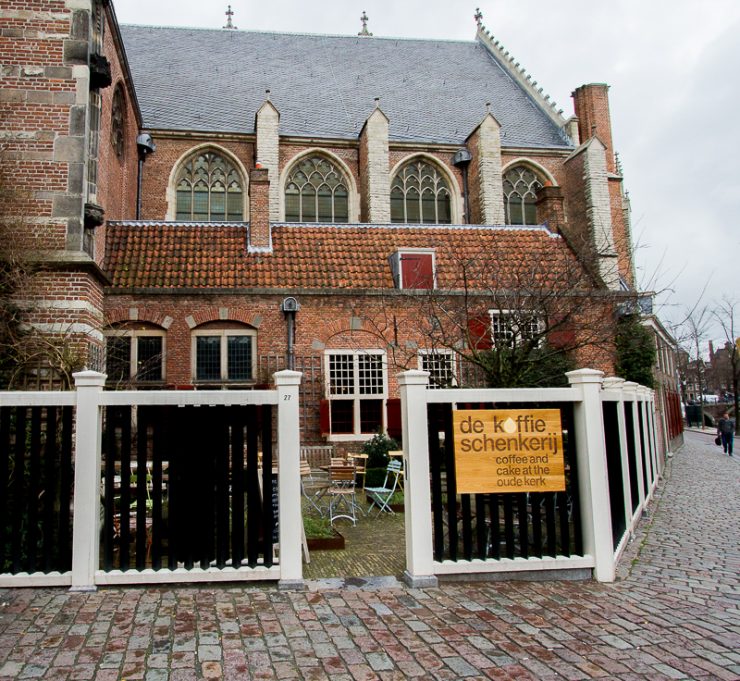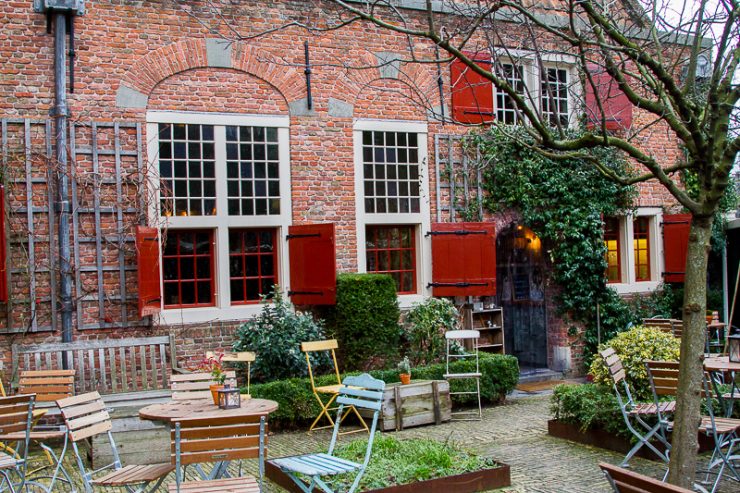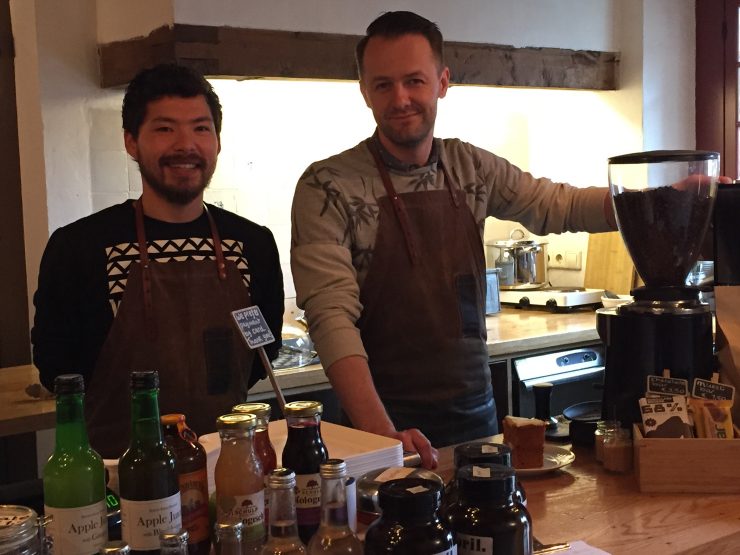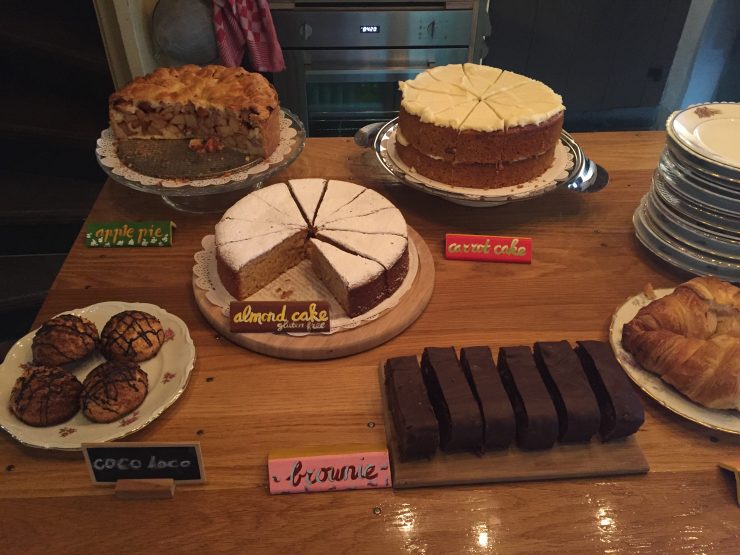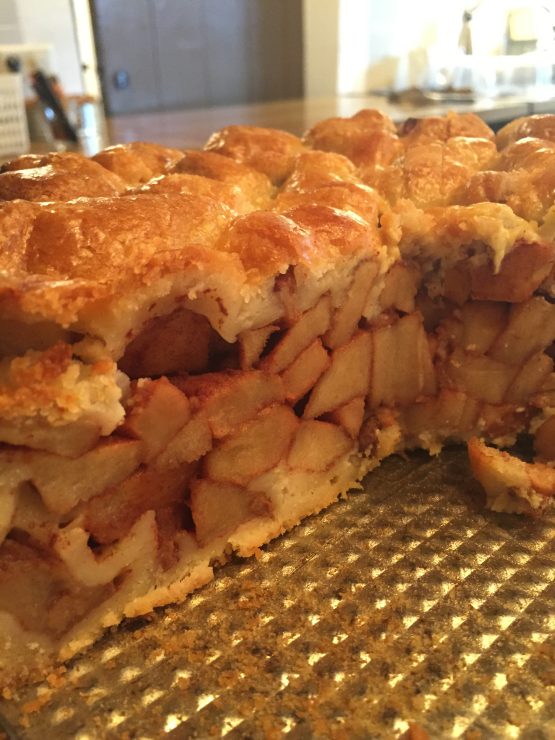The world knows it as the Red Light District, but locals here in Amsterdam call this notoriously permissive neighborhood “De Wallen.” The Dutch name comes from the fortifications built around Amsterdam’s center in the 15th century, and while the walls no longer exist as such, the area they once demarcated still bears some heavy barriers—of a social kind. Many city residents write the neighborhood off as, at best, a bachelor party’s playground. Less rosily, they see it as the Bermuda Triangle of cheap sex, drugs, and snack bars.
But in the very heart of De Wallen, amidst the narrow alleyways and their silhouetted windows, a cafe is breaking down some of those walls. With its gentle hammer of hospitality—a calm, convivial space with plenty of toothsome aliments on offer—De Koffieschenkerij beckons Amsterdammers back into a postcode all too often pooh-poohed.
The venue is located in Amsterdam’s oldest building, the Oude Kerk, indeed an “old church” dating back to 1306. And although De Koffieschenkerij turns three this spring, it was only licensed last year to operate as more than a museum cafe servicing entrance-fee-paying visitors to the church.
“It’s nice to know the priests were changing their clothes here,” smiles owner Job Oosting. Not that he spends much time thinking about what clergy do behind closed doors. But when he and his partner, Anne Rijks, were presented with the church’s decades-long disused sacristy as a possible spot for their venture, they saw the potential right away. “We said: ‘Yes, start a coffee business here,’” recalls Oosting. “It’s not big, but it’s great—you know, the atmosphere.”
De Koffieschenkerij’s interior is dimly lit and intimate. Spread over two floors, the relaxed mix of retired church furniture and vintage pieces can hold 40 customers. Locally designed ceiling lamps, in a muted turquoise matte, harken back to the iron chandelier of a Gothic cathedral. Varnished oak tabletops are dotted with nailheads, also a nod to the medieval. Little figures pose whimsically on Delft-style tiles behind the custom-made bar. Built on wood beams found in the attic crawl space, the counter provides a sturdy surface for a Ceado grinder and a two-group La Marzocco Linea espresso machine.
Dutch company Bocca, which won a 2014 European Coffee Award in the category of artisan roaster, supplies De Koffieschenkerij with its single coffee offering, a creamy, on-the-sweet-side Brazilian. The owners had initially planned to serve other specialties, like filter coffee, “But we noticed that coffee isn’t the only thing people want,” says Oosting.
Both he and Rijks made their careers in the hospitality industry and, before opening the cafe, Oosting worked at Amsterdam’s Restaurant Merkelbach, known for its slow food, locavore philosophy. It shows. De Koffieschenkerij’s concise menu reflects a considered curation from the local community, sourced from multiple local bakers.
Staples include brownies and carrot cake made by a Minnesota native who left his pastel-frosted mark on the Dutch capital many years ago at self-touted “American bakery” De Drie Graefjes. Appeltaart—the more vertically stacked, less insulin-surging Dutch cousin to America’s apple pie—is handmade by an Amsterdam baker described by Oosting as family heir to the recipe that earned eatery Winkel its slice of fame (with a dollop of cream).
Most local of all, though, are the soups. They come from just across the street, where a Dutch branch of the NGO Not For Sale helps survivors of human trafficking enter the workforce. The vegetarian soups they cook, as part of their training, are also sold to women working in some of the nearby brothels.
With the front gate to its courtyard now open seven days a week, business is going well for the cafe. Come May, their three-year anniversary, Oosting expects to have finished the last touches on interior design, such as replacing green velvet-covered church chairs—evocative though they are—with more comfortable seats.
In the meantime, the goal is to get more fellow Amsterdammers to frequent the venue. It “will take a few years,” Oosting guesses, before locals fully appreciate the neighborhood. But he seems patient to help make history.
After all, De Koffieschenkerij shares an interior church wall with the room where, in 1624, Rembrandt and his wife signed their wedding certificate. In another corner of the church is the bride’s tomb; she’s one of thousands buried there. These tombs belong to renowned national figures, including naval heroes of the Dutch East India Company, without whom coffee might never have touched the Dutch.
De Koffieschenkerij is located at Oudekerksplein 27, Amsterdam.
Karina Hof is a freelance journalist based in Amsterdam. Read more Karina Hof on Sprudge.
The post Coffee Inside Amsterdam’s Oldest Church At De Koffieschenkerij appeared first on Sprudge.


